Le Mont-Saint-Michel is an island commune in Normandy, France.
It is located about 1 kilometer (0.6 miles) off the country’s northwestern coast, at the mouth of the Couesnon River near Avranches.
The island covers an area of 100 hectares (247 acres) with a population of about 50 people.
The Mont has a circumference of about 960 meters (3,150 feet) and its highest point is 92 meters (302 feet) above sea level.
The structural composition of the town exemplifies the feudal society that constructed it: on top, God, the abbey and monastery; below, the great halls; then stores and housing; and at the bottom, outside the walls, houses for fishermen and farmers.
The connection between Mont Saint-Michel and the mainland has changed over the centuries. Previously connected by a tidal causeway (a path uncovered only at low tide), this was converted into a raised (permanently dry) causeway in 1879, preventing the tide from scouring the silt around the mount.
The tides can vary greatly, at roughly 14 meters (46 feet) between high and low water marks.
Though now an iconic tourist destination, this unusual little town was once used as a strategic
fortification, protecting the north of France from attack.
According to legend, the archangel Michael appeared in 708 to Aubert of Avranches, the bishop of Avranches, and instructed him to build a church on the rocky islet.
Unable to defend his kingdom against the assaults of the Vikings, the king of the Franks agreed to grant the Cotentin peninsula and the Avranchin, including Mont Saint-Michel, to the Bretons in the Treaty of
Compiègne (867).
The mount gained strategic significance again in 933 when William I Longsword annexed the Cotentin Peninsula from the weakened Duchy of Brittany. This made the mount definitively part of Normandy, and is depicted in the Bayeux Tapestry, which commemorates the 1066 Norman conquest of England.
In 966 a community of Benedictines settled on the rock at the request of the Duke of Normandy and the pre-Romanesque church was built before the year one thousand.
In the 11th century, William of Volpiano, the Italian architect, was chosen by Richard II, Duke of Normandy, to be the building contractor. He designed the Romanesque church of the abbey, placing the transept crossing at the top of the mount. Many underground crypts and chapels had to be built to compensate for this weight, forming the basis for the supportive upward structure that can be seen today.
Also in the 11th century the first monastery buildings were built up against its north wall.
In the 12th century, the Romanesque monastery buildings were extended to the west and south.
In the 13th century, a donation by the king of France, Philip Augustus, in the wake of his conquest of
Normandy, enabled a start to be made on the Gothic section of the “Merveille”, two three-story buildings, crowned by the cloister and the refectory.
In the 14th century, the Hundred Years War made it necessary to protect the abbey behind walls and military constructions, enabling it to resist a siege lasting thirty years.
Because of its unique position, accessible at a low tide, but inaccessible when it is high tide, Mont Saint-Michel remained unconquered during the Hundred Years’ War, where a small garrison fended off a full attack by the English in 1433.
Two wrought-iron bombards that Scales abandoned when he gave up his siege are still on site. They are known as les Michelettes. Mont Saint-Michel’s resolute resistance inspired the French, especially Joan of Arc.
In 1421 the roman choir of the abbey church collapsed. It was rebuilt in Gothic style from 1446 to 1523 (with a construction break from 1450 to 1499).
When Louis XI of France founded the Order of Saint Michael in 1469, he intended that the abbey church of Mont Saint-Michel become the chapel for the Order, but because of its great distance from Paris, his intention could never be realized.
Over time, the Mount became deserted. It did not escape the fighting between Catholics and Protestants when the Protestants tried several times to conquer the Catholic Mount. Monks and Abbots started to desert the Mount whose buildings were close to collapse.
The abbey was closed and converted into a prison, initially to hold clerical opponents of the republican regime. High-profile political prisoners followed, but by 1836, influential figures — including Victor Hugo — had launched a campaign to restore what was seen as a national architectural treasure.
The prison was finally closed in 1863, and the mount was declared a historic monument in 1874.
Over 60 buildings within the commune are protected in France as monuments historiques.
The Mont-Saint-Michel and the Bay of the Mont-Saint-Michel have been listed as UNESCO World Heritage Sites since 1979.
It is one of France’s most recognizable landmarks, visited by more than 3 million people each year.
Le Mont-Saint-Michel has long “belonged” to some families who shared the businesses in the town, and succeeded to the village administration.
There are about fifty shops for and plenty of restaurants with fine views.
Mont Saint Michel has a number of small hotels located within the island township.
On 16 June 2006, the French prime minister and regional authorities announced a €164 million project to build a hydraulic dam using the waters of the river Couesnon and the tides to help remove the accumulated silt, and to make Mont Saint-Michel an island again.
The construction of the dam began and finished in 2009.
On 22 July 2014 the new bridge by architect Dietmar Feichtinger was opened to the public.
The light bridge allows the waters to flow freely around the island and improves the efficiency of the now
operational dam.
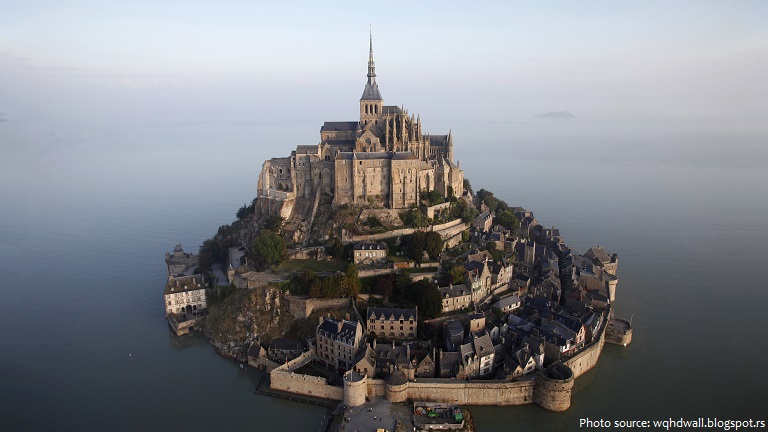
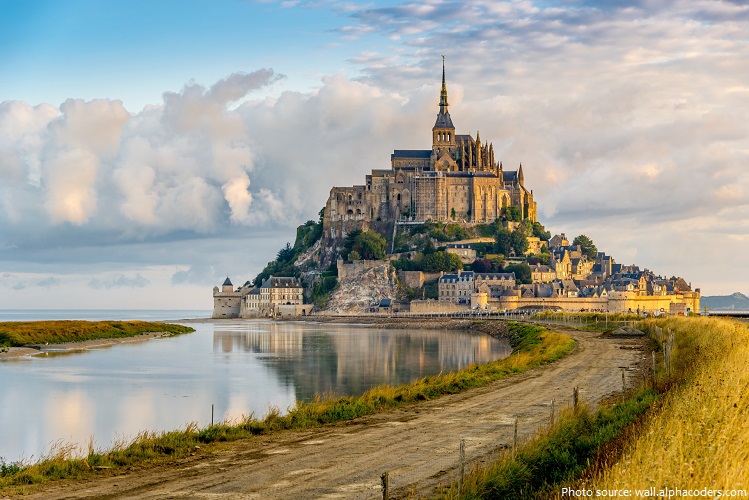

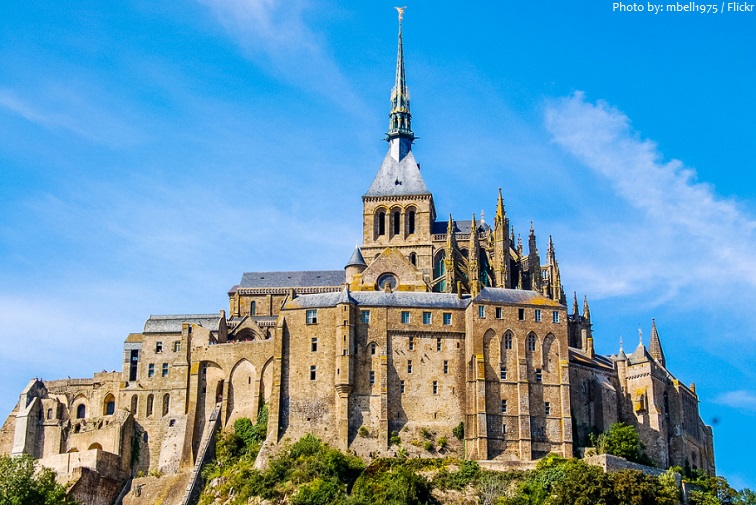

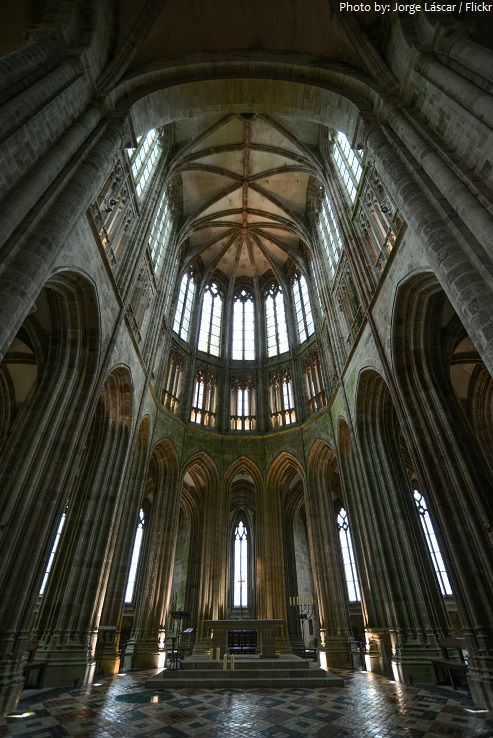
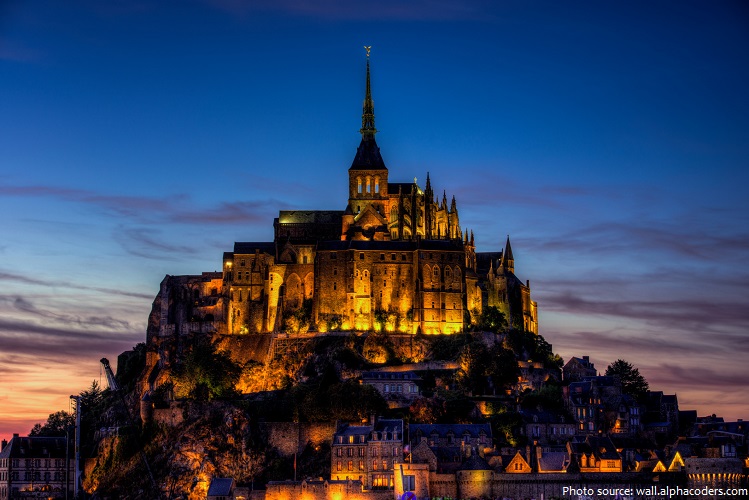
Comments are closed.